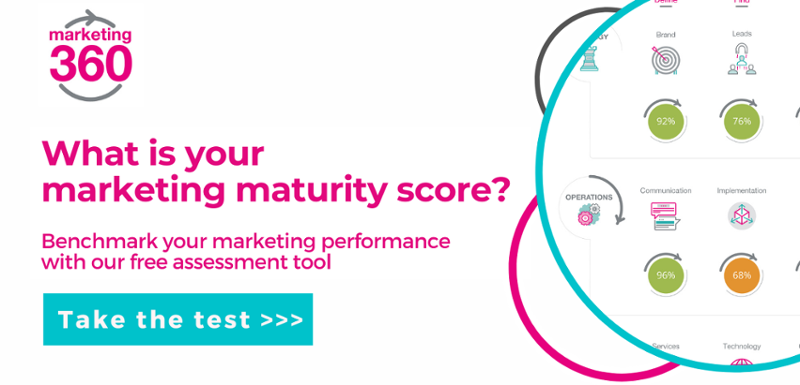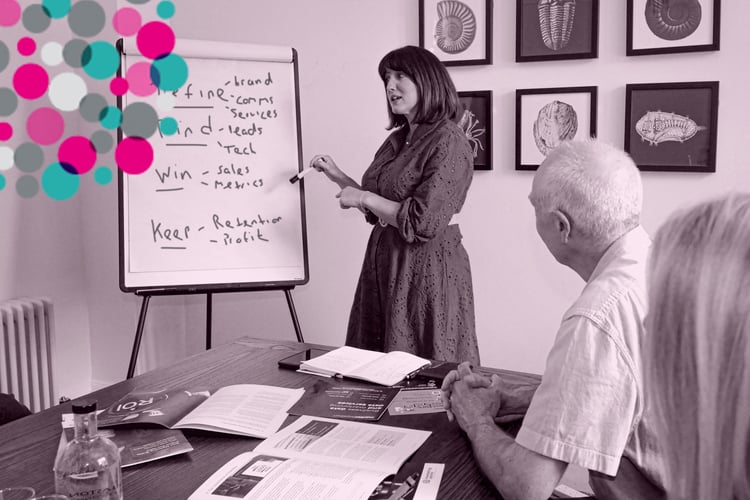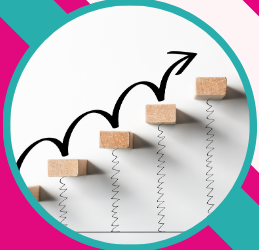Our Marketing 360 Assessment has found that there are three aspects of marketing that UK SME owners struggle with the most: marketing metrics, generating leads and executing marketing plans. In this post, we’ll focus on the second challenge: generating the right leads and closing them effectively.
We recently spoke with Sophia Ahrel, a part-time Marketing Director with The Marketing Centre, to hear how she helped an ambitious fintech company to increase lead generation by understanding, measuring and optimising the customer journey.
Background
Sophia Ahrel began working with this London-based fintech software business in 2018. They develop bespoke software and commercial lending solutions for banks. It was a successful business, but it lacked a robust marketing function and was struggling to generate qualified leads.
It was Sophia’s job to change all that.
“The CEO’s mandate was to develop more leads, better qualified opportunities, support for the sales function, and better tracking of the team’s efforts,” Sophia explained. “I was brought in to build the marketing function from zero up.”
Here are the four crucial steps that helped Sophia build an effective lead generation machine.
Data is key to quantifying performance
The first step was to understand where the weaknesses were, why they were happening and make a plan for addressing them.
Sophia quickly noticed the lack of experience in the marketing department. Junior interns were sitting where people with a deep background in marketing should have been.
“The first step we took was to hire some qualified marketing people. Until then, interns had been the basis for the marketing function. We also hired a full-time global marketing manager to work under me. And we hired an events and communications executive who helped us with the logistics.”
But gaps remained. The company had a strong CRM platform with Salesforce, but the platform hadn’t been fully integrated into the sales funnel, which meant the data was organised poorly. Everything was being run through a spreadsheet, and as a result, the company all too often lost track of the customer journey.
“We built a new website based on Umbraco that was fully integrated across all existing platforms. We could then follow very clearly which leads were coming from inbound and outbound channels.”
At the same time, they could track the performance of the sales teams to help them spot gaps and understand where to invest in training.
“It's one thing knowing what our conversion rates are like but seeing the differences that exist across different teams is really insightful.”
Optimise where the money is being spent
The company was investing heavily in marketing - around half a million pounds a year, mostly on events - but there was no system for measuring the impact of that spending.
“There was no PR, communications or content marketing, and no digital marketing,” says Sophia. “When we started to build a joined-up marketing and sales process across multiple channels we realised that we needed to start measuring exactly which channel was producing conversions and which weren’t.”
She and her team then set KPIs for every step of the customer journey that meant they could track their conversion rates and allocate spend accordingly.
It’s the quality of leads that counts, not just the quantity
The company had traditionally focused on outbound sales. Sophia began to develop an inbound marketing process that included Google Ads, paid social (particularly LinkedIn) and SEO to work alongside it.
“That has worked really well because while we are getting a lower number of leads, the leads we get are of a much higher quality. As a result, the conversion rate is up.”
They also hired a digital marketing manager who was able to optimise their website, creating more focused landing pages, removing unnecessary form fields and publishing more relevant content.
“With a dedicated digital marketing manager, we were able to start making adjustments to our digital marketing and measuring the impact of those changes to see what worked.”
The secret to customer retention lies in the data
The impact of Sophia’s work was quickly apparent. The speed of implementation for an average client was anywhere between six to 18 months. But as a result of her work, new opportunities started coming their way that could be onboarded in a matter of weeks.
“By getting focused on the data, then getting down into the channels and seeing what the metrics were there, both in terms of the initial win and the retention, you get to see whether or not you are winning the right sort of customers and doing the right things to keep those customers,” she says.
With the sales teams enjoying better qualified leads, they could spend less time developing new business and more time closing deals.
Sophia's top three tips for getting more business from leads
“The first is to invest in a strong marketing tech stack that gives you a full view of the customer journey from the very beginning to the very end. Second, align both the marketing and sales teams to ensure leads that are coming in are being converted. And finally, demonstrate that the marketing function is not a cost but an investment, and that through the tech stack you can monitor your conversion rates and decide which channels are working and which aren’t.”
How to Generate more business from leads
- Invest in a strong marketing stack that tracks the customer journey from start to finish
- Align marketing and sales to ensure quality leads are being generated and converted
- Demonstrate that the marketing function is not a cost but an investment and analyse conversion rates to see which channels are working and which aren’t
The company had enjoyed steady growth in recent years, but it wasn’t until they developed their marketing function under the supervision of Sophia that they began to really understand the customer journey.
This was the start of a process by which the company could boost the quality of its leads, enjoy better conversion rates and ensure the customers they were attracting translated to business they could retain.
"Through strong sales and marketing alignment we have a solid pipeline of new and existing client opportunities,” Sophia says. “This means a steady sustainable revenue growth year-on-year."
How would you rate your business’s lead generation performance?
We know how hard it is for business owners to find the time to take a step back and review their marketing performance.
The Marketing 360 assessment takes just 10 minutes to complete and will give you an objective view of what’s going well and what you should focus on.
Click here to get your Marketing Maturity Score.





